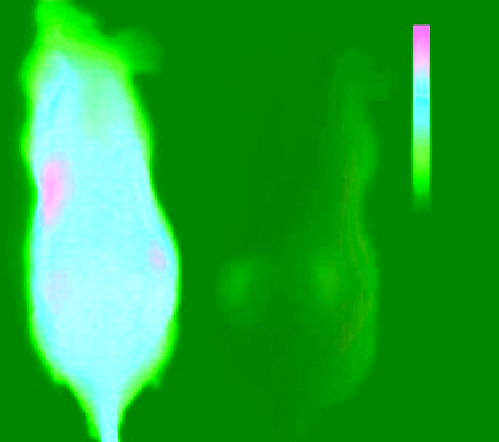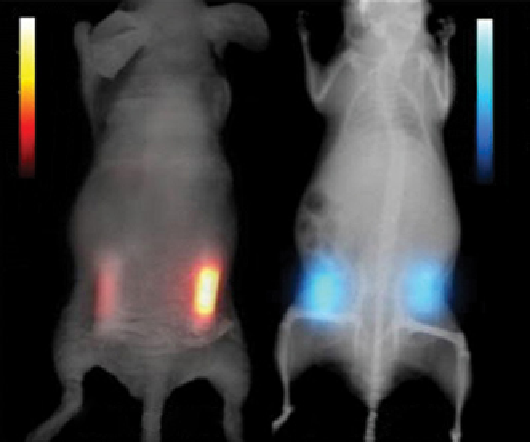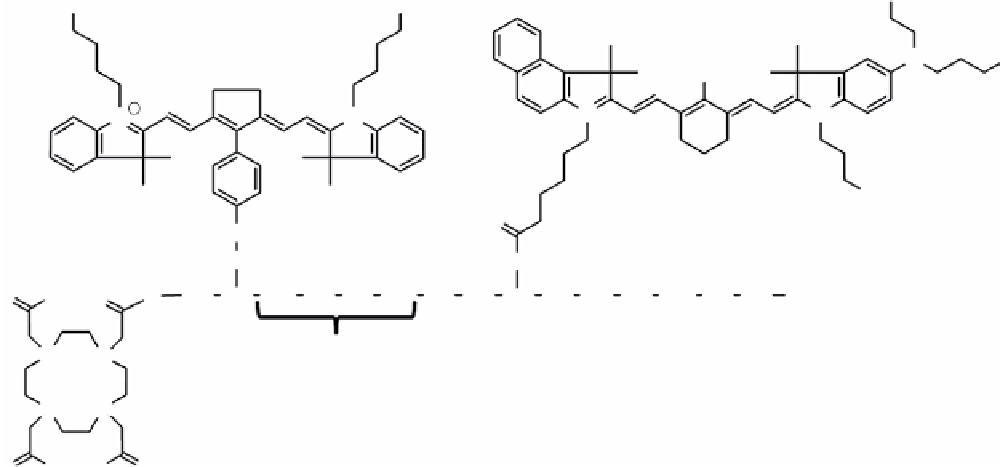Chemistry Reference
In-Depth Information
(a)
SO
3
H
SO
3
-
SO
3
Na
QC-1
LS-276
N
SO
3
H
Cl
+
+
N
N
N
N
SO
3
H
O
CO
NH
NH
N
OH
Gly Lys Asp
Glu Val Asp Ala
Pro
Lys Gly Arg Gly Asp Tyr Gly
NH
2
O
O
Cleavage site
N
N
DOTA
N
N
O
OH HO
O
(b)
(c)
3125
800
30000
Control
LS498
2344
612
22500
1562
425
15000
781
238
7500
0
50
0
Fluorescence
Scintigraphy
FIgure 15.4
Noninvasive imaging of Caspase-3 activity with an activatable probe. (a) Chemical structure of the probe. (b) activated
(left) versus quenched (right) fluorescence signal of the probe in mice. (c) Fluorescence (left) and scintigraphy (right) images of subcuta-
neously implanted capsules containing
64
Cu-labelled activatable probe (i.e., lS498). Tubes were implanted subcutaneously below the
surface of the skin. Comparable signal intensity was observed in scintigraphy ('always on'). However, the fluorescence signal was much
stronger in the presence of Caspase-3. adapted with permission from Ref. [49]. (
See insert for colour representation of the figure.)
)
tissue. upon further optimisation and development, such dual-labelled PET/NIRF agents can be translated into the clinic for both
disease diagnosis and image-guided surgery in multiple solid tumour types, because all solid tumours depend on angiogenesis.
DTPa-mannosyl-dextran (lymphoseek), a dextran polymer that contains several mannose groups for targeting the mannose
receptor on macrophages, has been tested for sentinel lymph node (SlN) mapping in clinical trials [68, 69]. Recently, SlN
mapping with both PET and NIRF imaging was reported in a preclinical study using modified lymphoseek [70]. a boronate
trap for F
-
and a NIR fluorophore was combined into a single molecule, which was conjugated to the free amino groups in the
dextran chain. The fact that both imaging labels are combined in one molecule is highly desirable, because only one attachment
site is required on the targeting ligand, which leads to much easier synthesis and more facile purification of the imaging probe.
In addition, the boron trap can conjugate three
18
F atoms, which can give high specific activity of the imaging agent. It was sug-
gested that due to the relatively short half-life of
18
F, hydrolysis of the B-F bond (less stable than the C-F bond) can be neglected.




